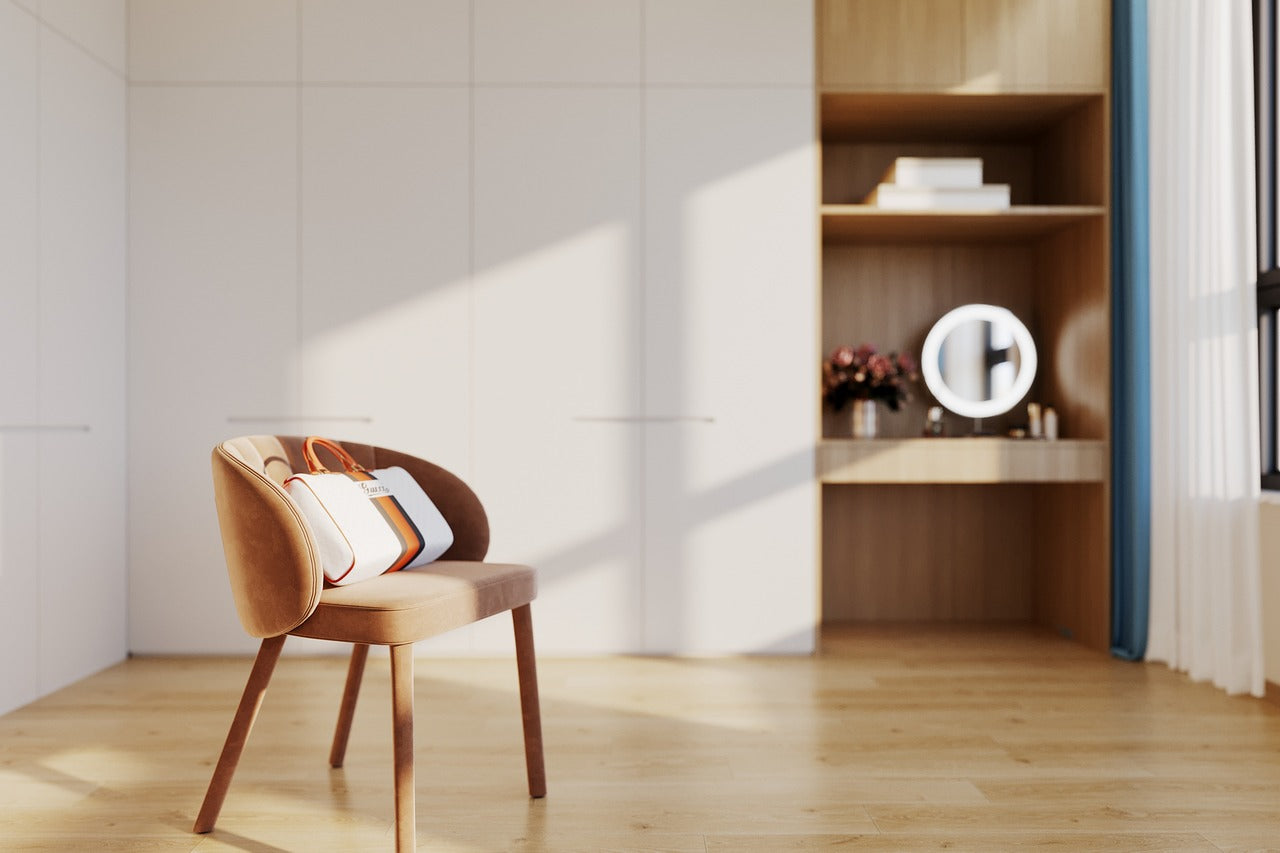Furniture restoration is a rewarding and transformative process that breathes new life into old or worn-out pieces. Whether you're dealing with a cherished heirloom or a thrift store find, giving furniture a fresh coat of paint can dramatically alter its appearance, turning it into a centerpiece for your home. The art of restoring furniture with paint combines practical know-how with creative expression, allowing you to bring beauty and function back to your items while personalizing them to your style.

This guide will walk you through the steps needed to paint and restore your furniture, from assessing its current condition to choosing the right paints and finishes. By following these steps, you can confidently take on DIY restoration projects and create stunning, custom pieces for your space.
Importance of Furniture Restoration
Restoring furniture has several benefits beyond aesthetics. From an environmental standpoint, it contributes to sustainability by reducing waste and preventing old furniture from ending up in landfills. Economically, restoring is often far more affordable than purchasing new, quality pieces. Moreover, the sentimental value attached to certain furniture can be preserved through restoration, keeping treasured items functional and beautiful.
By restoring furniture with paint, you can also add your own creative touches, making each piece truly unique. Whether you're working on leather, wood, or metal furniture, this process blends practical skills with artistic expression, making it perfect for those who love DIY projects.
Assessing Your Furniture's Current Condition

Before you begin the restoration process, it’s essential to assess the current condition of the furniture. Start by inspecting the surface for any damages, such as scratches, dents, or peeling paint. Look for signs of structural issues, including loose joints or cracked wood. For leather furniture, you should also check for tears or wear spots that may need repair before painting.
Understanding the type of restoration needed is crucial. For instance, if you’re working on wooden furniture, you may need to fill in scratches and sand down rough areas. If restoring leather furniture, repairing any damage to the leather surface is important before applying new paint.
How to Inspect for Damages and Understand What Kind of Restoration is Needed:
- Wood Furniture: Check for scratches, dents, and peeling paint. Tighten any loose screws or joints.
- Leather Furniture: Inspect for tears or cracks. Clean the leather thoroughly before painting.
- Metal Furniture: Look for rust spots or surface pitting. Use a rust-inhibitor primer before painting.
Materials and Tools Needed
Before beginning any painting project, gathering the right tools and materials is key to achieving professional results. Here is a list of essential supplies you will need for furniture painting:

Essential Supplies:
- Paints: Choose from chalk, latex, or oil-based paints depending on the finish you desire. Chalk paints are great for achieving a vintage or distressed look, while latex paints are easy to use and provide a smooth finish. Oil-based paints are highly durable, perfect for heavy-use furniture.
- Primers: Primer helps ensure the paint adheres to the surface and provides an even base. Choose primers based on the type of material (wood, leather, or metal) you are working with.
- Sandpaper: You will need sandpaper in different grits, ranging from coarse (80-grit) to fine (220-grit), to smooth the surface.
- Brushes and Rollers: High-quality brushes are important for detailed work, while foam rollers help achieve smooth finishes on large, flat surfaces.
- Painter’s Tape: Use painter’s tape to mask off areas you don’t want to paint or to create designs.
Specific Recommendations for Types of Paints and Tools for Different Finishes
- For wood furniture, latex or oil-based paints work best depending on whether you want a matte or glossy finish.
- For leather furniture, a specialized leather paint, like Angelus leather paint, is highly recommended to ensure longevity and flexibility of the finish.
- For metal furniture, opt for rust-resistant primers and oil-based paints for long-lasting protection.
Preparation Steps
Proper preparation is vital for a smooth and long-lasting paint job. Cleaning, sanding, and priming your furniture are all essential steps in the preparation phase.
Cleaning and Prepping the Furniture Surface
Before painting, clean the surface thoroughly to remove any dust, dirt, or grease. For wood furniture, a simple solution of mild soap and water works well. Leather surfaces can be cleaned using a leather cleaner to ensure proper paint adhesion. If your furniture has an existing finish, you may need to use a deglosser to dull the surface.
Detailed Sanding Techniques to Ensure Paint Adherence
Sanding the furniture surface is a critical step in prepping. Start with a coarse grit sandpaper (around 80-grit) to remove any imperfections, then gradually move to a finer grit (220-grit) to smooth the surface. This process helps ensure that the paint adheres evenly, resulting in a professional finish.
Stripping Old Paint or Finish, if Necessary
If the furniture has several layers of old paint or finish, you may need to strip it before proceeding. Use a paint stripper or sander for wood surfaces. Leather furniture typically doesn’t require stripping, but ensure it's clean and free of any conditioning agents.
Priming Your Furniture
Priming your furniture is essential for achieving a smooth, even paint finish. It helps the paint adhere better and provides a uniform surface.
Choosing the Right Primer for Different Types of Wood and Finishes
For wood furniture, use a primer suited for the type of wood. For leather furniture, a leather-specific primer ensures proper adhesion. Metal furniture requires a rust-resistant primer if you're dealing with any corrosion.
Painting Techniques

Painting is where the real transformation happens. Here’s how to ensure a smooth and flawless paint job:
Step-by-Step Guide to Painting, Including Brush and Roller Techniques
- Apply Thin Coats: Always apply paint in thin coats to avoid drips and streaks.
- Brush or Roller: Use a brush for detailed work and a foam roller for larger, flat surfaces.
- Dry Between Coats: Allow each coat to dry completely before applying the next layer.
Tips on Achieving a Smooth Finish with Minimal Brush Marks
To minimize brush marks, use a foam roller on flat surfaces and lightly sand between coats with fine-grit sandpaper (320-grit). A paint extender can also help reduce visible brush strokes.
Discussion on Different Paint Types
- Chalk Paint: Ideal for creating a distressed or matte finish.
- Latex Paint: Best for smooth finishes and easy application.
- Oil-Based Paint: Highly durable, making it perfect for high-use furniture.
Decorative and Custom Finishes
Now comes the fun part: customizing your furniture with creative finishes.
Techniques for Creating Distressed, Antique, or Modern Finishes
To achieve a distressed look, lightly sand the edges after painting to reveal the wood underneath. For a modern finish, use high-gloss paint for a sleek, contemporary appearance.
Using Stencils or Painter’s Tape to Create Designs
Stencils or painter’s tape can help you create patterns or geometric designs, adding a unique, personalized touch to your furniture.
Protecting Your Finished Piece
After all your hard work, you want to ensure the finish lasts. Applying a protective topcoat helps protect the paint from wear and tear.
Best Practices for Applying Sealants and Finishes
- For wood, apply a clear polyurethane finish for durability.
- Leather surfaces benefit from a wax finish that keeps the leather supple and protects the paint.
Reassembling and Caring for Your Restored Furniture

Once your piece is painted and finished, you can reassemble it. Be sure to handle it with care to avoid scratching the fresh paint.
Guidelines on Reassembling Any Removed Parts
If you removed any parts during the painting process, such as drawers or handles, carefully reinstall them. Make sure all screws are tightened, and everything functions as it should.
Tips for Maintaining the Restored Furniture
Regular dusting and avoiding direct sunlight will keep your restored furniture looking its best. For leather furniture, using a leather conditioner every few months will help maintain its finish.
Troubleshooting Common Painting Issues
Even with careful preparation, you might encounter some common painting issues like drips, streaks, or uneven finishes. Fortunately, these can often be fixed easily.
How to Deal with Drips, Streaks, and Uneven Finishes
- Drips: Sand the area lightly and repaint.
- Streaks: Sand between coats and use a foam roller to ensure a smooth finish.
- Uneven Finish: Apply an additional coat of paint to even out the surface.
Restoring furniture with paint is an exciting and creative way to give old pieces a new life. Whether you’re updating a family heirloom or repurposing a thrift store find, this process allows you to blend artistry with functionality. With the right techniques, materials, and patience, you can transform any worn-out furniture into a beautiful, custom piece that complements your style.
As you explore furniture restoration, don't forget that Angelus Direct offers a range of high-quality paints and materials suited for various restoration projects, ensuring your hard work results in a beautiful, lasting finish.
FAQ Section
Q: Can I paint leather furniture?
A: Yes, you can paint leather furniture. Use specialized leather paint, like the ones from Angelus Direct, for the best results.
Q: What type of paint is best for wood furniture?
A: Chalk, latex, and oil-based paints are commonly used. Chalk paint offers a matte finish, latex is easy to apply, and oil-based paint is highly durable.
Q: Do I need to prime my furniture before painting?
A: Yes, priming ensures better adhesion of the paint and helps create a smooth, even finish.
Q: How can I prevent brush marks when painting?
A: To prevent brush marks, use a high-quality brush, apply thin coats, and lightly sand between coats with fine-grit sandpaper (320-grit). A foam roller on flat surfaces can also help achieve a smooth finish.
Q: How do I protect my painted furniture?
A: After painting, apply a protective topcoat such as polyurethane for wood, or a wax finish for leather. This will help protect the furniture from wear and tear and extend its longevity.

